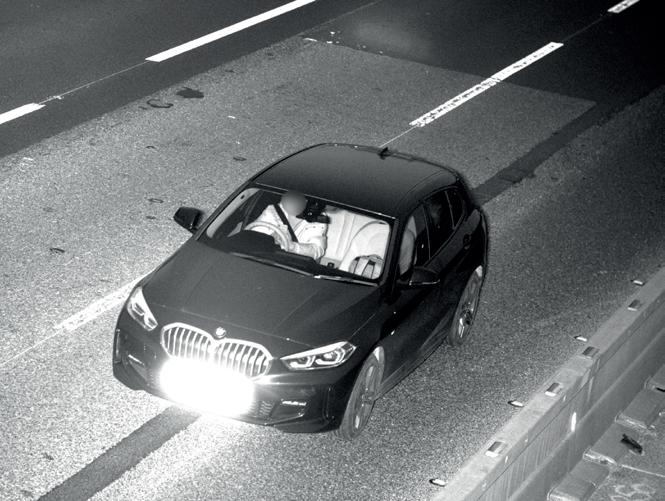
3 minute read
S-AI-fety solution
from Annual Review 2023
by ITS_UK_Org
There’s no doubt that speeding is a major cause of crashes on our roads, but collision statistics show that distracted driving, particularly use of a mobile phone at the wheel, is a major issue. Next time you’re on the road, either driving, a passenger or a pedestrian, look out for people swerving, or randomly changing speed, and you’ll quickly see the driver gazing down at their devices thinking they can still safely control their vehicle.
The simple fact is, you can’t. If you can face seeing some horrific images, search an excellent BBC online documentary “Deadly Browsing: The Lorry Driver” to see what can happen when a driver is distracted by their phones. Once you have seen this, you will never think of looking at your phone whilst driving again.
Advertisement
Dangers
Drivers using a mobile, either to their ear or in their hand, is a serious issue which the road safety charity, Brake, says is four times more likely to lead to an accident as drink driving. Furthermore, these people risk not only their own safety, but all fellow road users.
Given that Police have so many other pressures on their time, it is vital technology can help them deal with this dangerous problem. A new generation of AI-powered cameras are helping them.
The cameras, designed by Australian company Acusensus and now being piloted in the UK, capture hi-res images of people in vehicles as they drive by. In these tests, the 'Heads-Up' system has been mounted on a mobile van, but it can also be installed on relocatable trailers for days at a time (and will be, in expanded operations later in 2023), or permanently located on street furniture such as gantries.
Offence
The images are automatically analysed in near real-time, and are optimised to flag up likely violations involving people holding a phone or not wearing a seat belt. When a possible case is identified by the software, anonymised images are sent to a secure cloud for later human review, which can look at the picture to decide if a potential offence has occurred. A further secondary check will validate this and then allows for the creation of an offence file, which can be used by the police for prosecution, and indeed has as part of the early trials.

The tests have been taking place across the UK for nearly two years with Acusensus working alongside AECOM and National Highways at more than 60 locations, in counties including Warwickshire, Devon, Cornwall, Merseyside, Bedfordshire and Sussex. In one of the trials on the M6, National Highways identified more than 750 seat belt and mobile phone offences along a short section in Merseyside in just a few hours – the highest number at a single site in a study which has also visited numerous locations across England. At one point, a high-visibility camera placed in the roadworks south of junction 23 at Haydock, was spotting an offence every 90 seconds, compared to the average at all other sites of one every six minutes.
Behaviour
The exciting thing is, the technology works in changing driver behaviour. In Australia, the first state-wide scheme rolled out in New South Wales in 2019 has had a significant impact on driver behaviour as people discovered that the technology existed and they face the real prospect of being caught if they broke the rules. The number of mobile phone detections have dropped by a factor of six, from 1 in 82 drivers in 2019 to 1 in 478 drivers in 2021. A subsequent programme in Queensland has similarly started to show active changes in behaviour.
As I mentioned, the same technology can simultaneously identify people driving, or in the passenger seat, who are not wearing a seat belt. This, too, is a key road safety issue, with PACTS reporting that three in ten vehicle occupants killed in road collisions found not be wearing a belt. In our tests, we found around four times more people were non-compliant with seat belt laws than mobile phones, and reducing this would be a significant contributor to reducing the road trauma toll.
Furthermore, the technology has the potential to spot other forms of annoying and irresponsible driving such as tailgating and driving in the middle lane when there is nothing in the inside lane.
I have always hated the newspaper headlines claiming automated enforcement is somehow a “war on the motorist”. It is not, but it is fighting a war on bad and dangerous driving, and anyone who watches the video I mentioned above will agree, this is a war we must fight and win.










